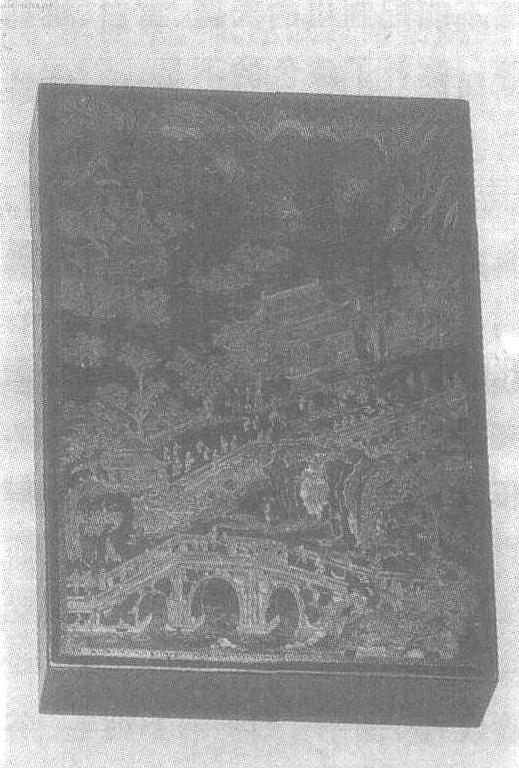嵌螺钿描金职贡图盒
清。长40厘米,宽34.1厘米,高6.8厘米。北京故宫博物院藏。长方形。黑漆地。职贡图用嵌薄螺钿间描金法镶成。三孔石桥上,挤满朝贡的人,有驱象的,牵狮子的,曳骆驼的等,桥头与宫殿栏杆相接,宫内斜路直通大殿,路上朝官络绎成行,直抵大殿。殿前旷地上跪着十余个叩拜的人。殿后重重宫阙、丛树、峰峦在流云中或隐或现。远处大朵的金勾卷云间,探出三个螺钿嵌成的龙首。此图镶嵌精致,色彩艳丽,效果可与工笔山水画媲美,堪称嵌螺钿加描金器中的精品。嵌螺钿见“嵌螺钿朱漆龙纹盘”条目。

| 词条 | 嵌螺钿描金职贡图盒 |
| 类别 | 中文百科知识 |
| 释义 | 嵌螺钿描金职贡图盒清。长40厘米,宽34.1厘米,高6.8厘米。北京故宫博物院藏。长方形。黑漆地。职贡图用嵌薄螺钿间描金法镶成。三孔石桥上,挤满朝贡的人,有驱象的,牵狮子的,曳骆驼的等,桥头与宫殿栏杆相接,宫内斜路直通大殿,路上朝官络绎成行,直抵大殿。殿前旷地上跪着十余个叩拜的人。殿后重重宫阙、丛树、峰峦在流云中或隐或现。远处大朵的金勾卷云间,探出三个螺钿嵌成的龙首。此图镶嵌精致,色彩艳丽,效果可与工笔山水画媲美,堪称嵌螺钿加描金器中的精品。嵌螺钿见“嵌螺钿朱漆龙纹盘”条目。
|
| 随便看 |
开放百科全书收录579518条英语、德语、日语等多语种百科知识,基本涵盖了大多数领域的百科知识,是一部内容自由、开放的电子版国际百科全书。